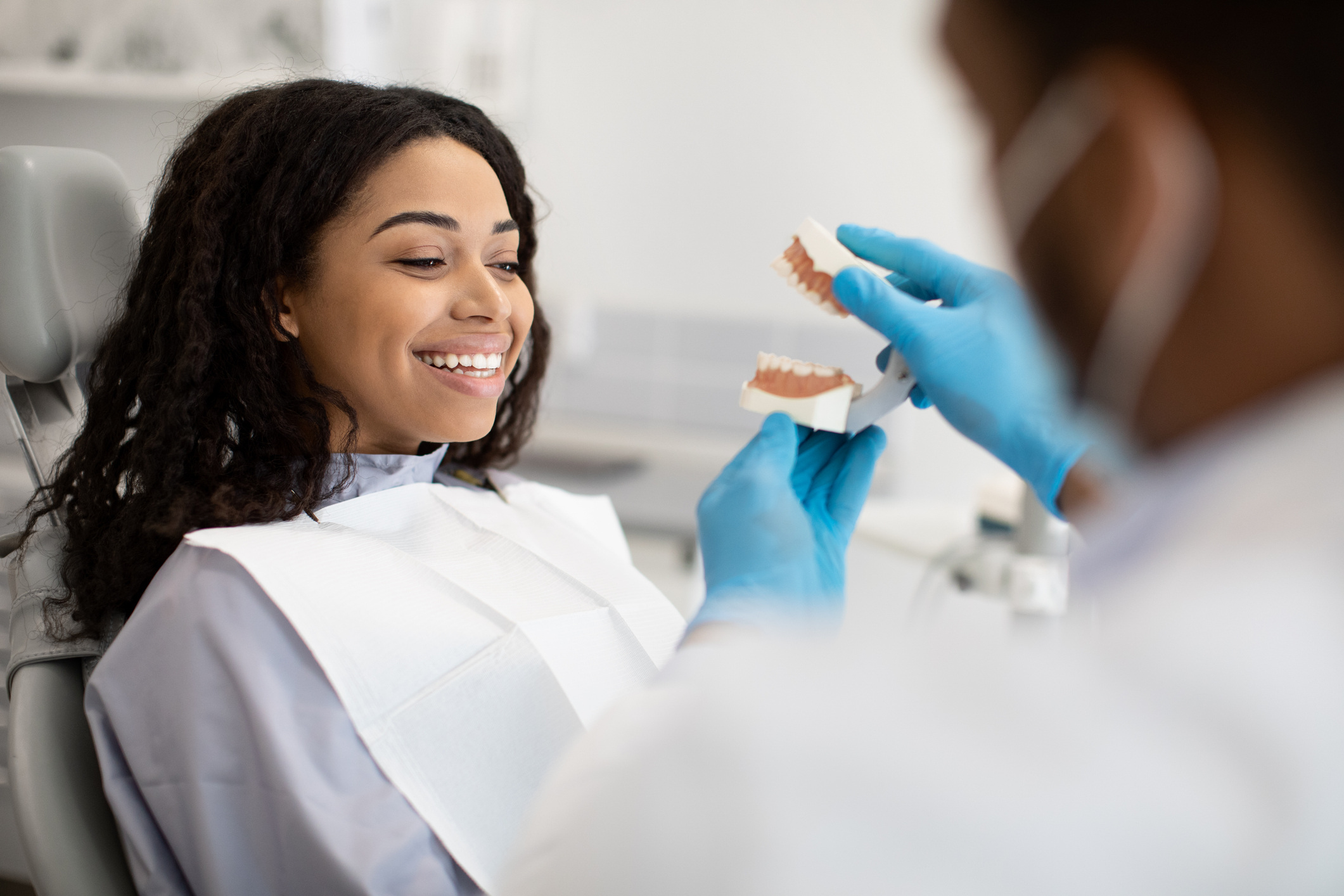In recent years, a trend known as "mewing" has gone viral on social media platforms like TikTok, with many young people attempting this DIY technique in hopes of reshaping their jawline.
But what exactly is mewing, where did it come from, and most importantly - does it actually work?
The board-certified Northwest Oral & Maxillofacial surgeons feel it's important to address this trend, which is supported by no credible medical evidence, and shed light on the facts and potential risks.
What is Mewing?
Mewing is a facial reshaping technique named after British orthodontists John and Michael Mew. It involves placing your tongue on the roof of your mouth, right behind your front teeth, and leaving it there indefinitely.
Proponents claim that over time, this tongue positioning will apply pressure to reshape the jawline and facial structure.
Countless social media users have posted before and after photos claiming mewing gave them more defined, attractive jawlines.
Who Started the Mewing Trend?
The technique is named after the Mew’s, father and son British orthodontist who popularized a form of orthodontics they call “orthotropics” which focuses on jaw posture.
However, in 2017, the elder Dr. Mew was stripped of his dental license due to making misleading claims about mewing as an alternative to orthodontic treatment. The British Orthodontic Society found no scientific evidence to support his theories.
“The dismissal was on grounds of misconduct for publicly denigrating the traditional practices of orthodontic tooth movement, in conjunction with exodontia and orthognathic surgery, as treatment for malocclusion and boldly heralding his own etiologic concepts of malocclusion, somewhat based on [Melvin] Moss's functional matric hypothesis,” reported the Journal of Oral and Maxillofacial Surgery (JOMS). “Specifically, Mew's theory postulates that genetic control of skeletal growth is not precise, but rather, that the articulation of the jaws and teeth is dependent on environmental guidance from the orofacial musculature. He and his followers further stipulate that the ideal facial esthetic (that is, ideal nose-chin relationship, well-defined jawline, and appropriately prominent malar eminences) can be realized by posturing the tongue against the palate with the lips sealed and the teeth in or near contact.”
Does Mewing Actually Work?
In short - no, there is no credible medical evidence that mewing can reshape the jawline or facial structure, especially past early childhood. Our bones are not that malleable once the face has finished growing and developing.
“The public needs to be made aware that it is not based on sound scientific evidence that would make it a viable alternative treatment to orthognathic surgery,” says JOMS.
Qualified medical experts have debunked the supposed before and after photos as misleading, with changes likely attributable to normal growth, weight loss, lighting, and camera angles.
“While tongue posture plays a role in facial development, mewing’s promises may be as distorted as some Instagram filters,” says the American Association of Orthodontists (AAO). “Unfortunately, scientific evidence supporting mewing’s jawline-sculpting claims is as thin as dental floss. A complex interplay of genetics, bone growth, and muscle development influences facial structure. Simply changing tongue placement isn’t enough to magically correct misaligned teeth, reshape your jawline, and prevent the need for orthodontic treatment.”
The Risks of Mewing and Other Social Media "Hacks"
While mewing may seem harmless, attempting facial restructuring without the guidance of a licensed professional can lead to jaw pain, breathing difficulties, and expensive orthodontic treatment to correct misalignment.
The AAO does not recommend any attempts to move teeth or align jaws without appropriate supervision, as they likely won’t achieve the results you’re aiming for.
“Before contemplating any DIY treatment, weigh the potential for irreversible and costly damage that may result if not executed correctly,” says the AAO.
Some problems that might arise when attempting to DIY change of your jawline:
- Misalignment of upper or lower jaw.
- Misalignment of teeth.
- TMJ pain or dysfunction at the hinge of your jaw.
- Chipped or loose teeth from pressure applied or misalignment.
More concerningly, mewing is just one example of the many dubious health and beauty "hacks" that go viral on social media.
From DIY dentistry to risky diets and skin treatments, social media is rife with medical misinformation that can seriously harm your health. Influencers and laypeople are not qualified to give health advice, no matter how confident and convincing they may seem.
"Social media is a powerful tool for informing the public in many subject areas, including Mewing, but it is not regulated by experts; unfortunately, many members of the public quickly fall prey to theories that have not been scientifically tested,” says JOMS. “Therefore, it is of vital importance that we educate our patients on the validated treatments for malocclusion and the danger of seeking non–peer-reviewed internet sources for health information in general.”
When it comes to your health, it's crucial to be discerning about where you get your information and treatment. Rather than trusting unproven social media trends, always consult a licensed medical professional.
Your dentist, doctor, or surgeon has the education, clinical experience, and expert knowledge to advise you on safe and effective treatments for your individual needs.
The Bottom Line on Mewing
Mewing is not a safe or scientifically proven method for reshaping your jawline or facial structure.
“While proper tongue posture plays a role in oral health and development, mewing oversimplifies the complexities of facial structure," emphasizes Myron Guymon, DDS, MS, AAO President. "There's no scientific evidence to support its claims of reshaping the jawline, and the potential risks outweigh any unproven benefits."
Like many viral social media health trends, it carries real risks, according to the AAO, when attempted without professional guidance, including:
- Dental Issues: Chronic pressure from mewing can loosen teeth, misaligned bite, and contribute to tooth wear and tear.
- Speech Impediments: Altered tongue placement can affect speech patterns and clarity, causing slurring or pronouncing difficulties.
- May require complicated treatment to resolve issues.
If you're unhappy with your facial appearance, don't fall for these DIY "hacks" - see a qualified medical professional who can advise you on safe, proven treatment options that will deliver real results. Your health is too important to risk on unsubstantiated Internet fads.







